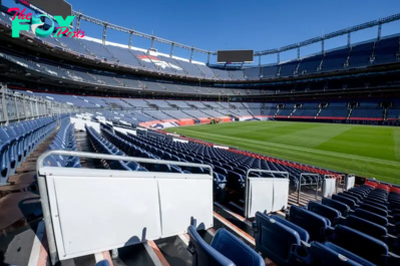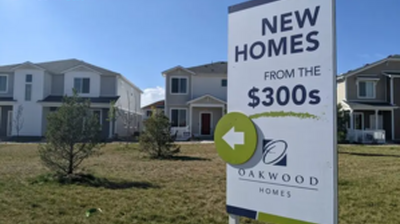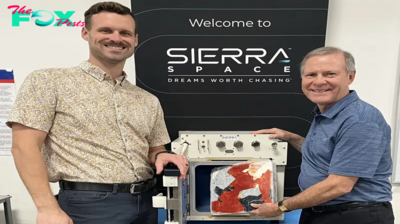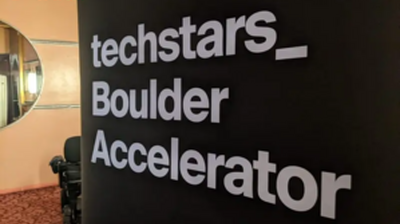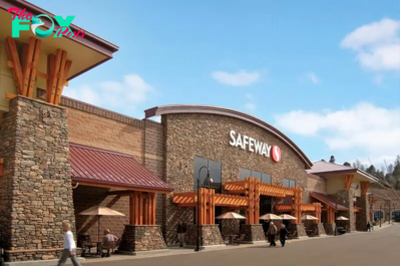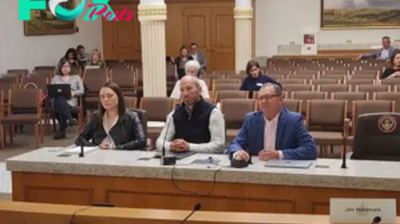Technology
Hope Springs in Greeley, the largest Habitat neighborhood in the West, gets a 3D twist and $100M to build 491 homes
While volunteering at a Habitat for Humanity ReStore in Greeley last fall, Rachel Borum heard the craziest thing. She, a single mother, could become a homeowner! Some of the families she met at the home-improvement thrift store had bought a house through Habitat for Humanity’s home ownership program. They encouraged her to apply.
Around the same time, she attended an event where she met the CEO of Alquist 3D, a startup using 3D-printing technology to build houses faster. The company had just announced it was moving its headquarters to Greeley and collaborating with Habitat.
“I followed him out and went to talk to him and I said, ‘Excuse me, did you mean Habitat for Humanity?’ He said yes and I was like, ‘Are you kidding me? … How do I get one of these,’” she recalled with a laugh. “It just all came together really.”
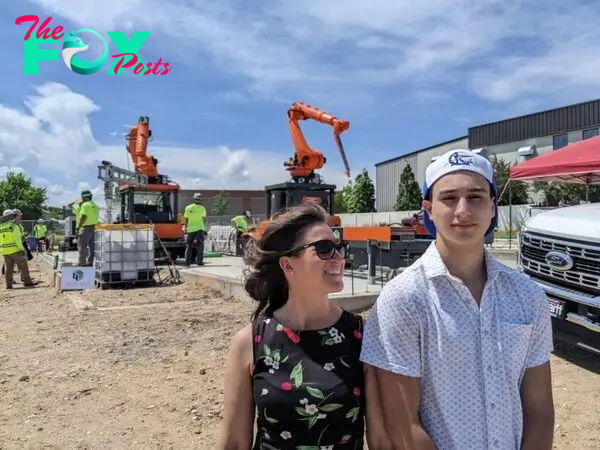
Borum gets by enough as a business operations manager at the University of North Colorado to support herself and her teenage son. But buying a house always seemed out of reach, especially as median sales prices climbed in Weld County to a half-million dollars. So, Borum applied for a Habitat home and recently learned she’s not only getting one, but will become the first to get one of those 3D-printed houses, which Alquist began printing on Thursday.
How’d she get so lucky?
“I actually didn’t even know I would get a 3D-printed house but when I was interviewing to see if I qualified for a home, I just put it out there that I’d heard about it and if there is any possibility, I would be very, very interested in seeing if I could get one,” Borum said. “I would have accepted any house but this was just like the icing on the cake.”
Asking, apparently, was key, said Cheri Witt-Brown, CEO of Greeley-Weld Habitat for Humanity.
“In her interview, she was the one that said, ‘Can I have the 3D printed house?’ Most of our families, frankly, that are in our queue are going there,” Witt-Brown said, as she pointed to the empty lot where 37 two-story duplexes will be built by Baessler Homes over the next 12 months. “They’re larger and in many cases, they’re multigenerational as well.”
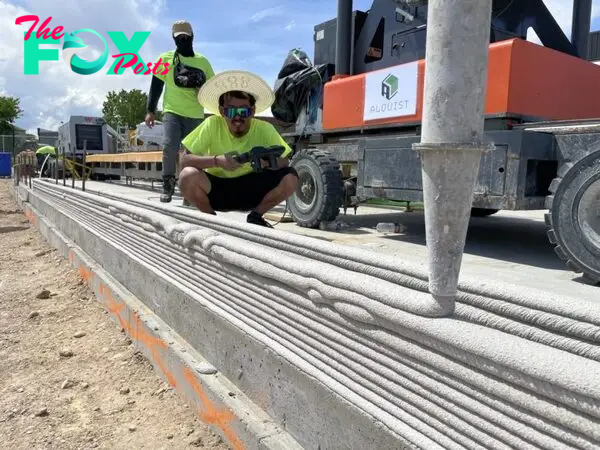
Borum’s future home is the first 3D-printed house in the mix with traditionally-built duplexes and Habitat single-family homes in the Hope Springs development behind the Walmart Supercenter on 23rd Avenue. The 42-acre site, which will also include 320 apartment units, is also getting two soccer fields, multi-use courts, a community garden, a nature discovery park and an on-site child care center.
As Habitat’s largest development in the West, it’s getting a lot of attention — and not just because of the 3D-printed homes. Normally, local Habitat chapters build three to five houses a year. But the ambitious Weld-Greeley Habitat plans to build 50 in the next year, which includes the 37 by Baessler, Alquist’s 3D house and between 10-to-15 traditional Habitat homes by the organization’s local crew.
“This is an innovative, climate-friendly, waterwise partnership whose model has attracted national attention,” Witt-Brown said during the ribbon-cutting ceremony on Thursday. “After presenting this model at a Habitat conference in Alaska, there are now hundreds of Habitat affiliates trying to replicate this development and it all started right here in Greeley, Colorado.”
But another reason why others have taken notice is the local generosity. The Richmark Companies, owned by the Richardson family in Greeley, donated $8.8 million in land and water, sewage and other infrastructure. That helped Habitat attract other financial supporters like Impact Development Fund, the Weld Trust, JBS Foods, oil company Oxy and others. The property’s “horizontal construction” is now complete, with paved streets and infrastructure.
“Hope Springs in the next four years will invest, between Richmark Companies and Habitat for Humanity, $100 million — that’s actual dollars — that will be invested here in civil and new construction dollars,” Witt-Brown said. “We will be going into vertical construction debt-free.”
Greeley has 15,500 houses on the way
Like many communities in Colorado, Greeley needs more housing and sooner rather than later, Mayor John Gates said, because the city’s population is expected to grow to 250,000 people from its current 113,000 in the next few decades.
“We’re growing about 3% a year, which is far more than most other communities are growing. And I think the reason is twofold. We have room to grow,” Gates said. “The other part is if you look at median home prices, I never thought in a million years that our median home price would hit $450,000. It’s sad because I don’t know how people are affording homes. But that being said, we’re still $100,000 to $200,000 lower than our neighbors.”
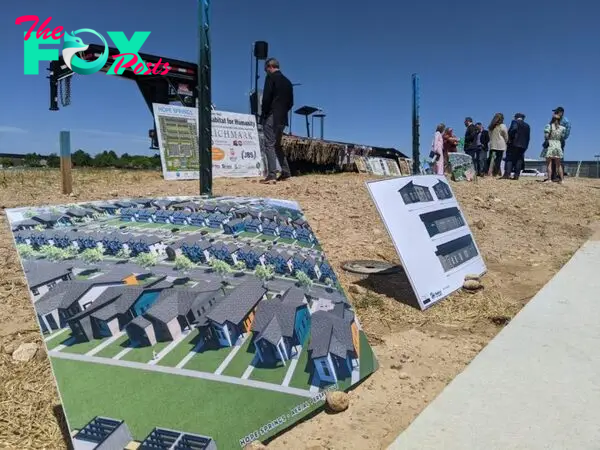
The growth in housing prices has slowed in the past year in the state but even in Weld County , they’re still increasing. In April, the county’s median sales price hit $515,000, up 5.1% in a year and 43% in five years.
Gates said there are 15,500 “rooftops” on the drawing board, primarily in the western part of the city, that are in some stage of development, though some are still working on securing land. It’s a reason why the city offered $2.85 million in incentives to Alquist 3D to relocate its headquarters.
“The (Hope Springs) project is going to take a while to build, but it’s starting now,” Gates said. “And the 3D-printed homes go up in a hurry.”
Alquist 3D has already built houses with Habitat in Virginia and elsewhere. Its average-sized home of less than 1,500 square feet is estimated to take less than 48 hours to print. Windows and doors are not 3D printed and are added later in the process.
-

 Technology2h ago
Technology2h agoThere Is a Solution to AI’s Existential Risk Problem
-

 Technology4h ago
Technology4h agoUS pushes to break up Google, calls for Chrome sell-off in major antitrust move | The Express Tribune
-

 Technology8h ago
Technology8h agoPublic health surveillance, from social media to sewage, spots disease outbreaks early to stop them fast
-

 Technology10h ago
Technology10h agoTikTok, PTA host youth safety summit in Pakistan | The Express Tribune
-

 Technology13h ago
Technology13h agoWhy a Technocracy Fails Young People
-

 Technology1d ago
Technology1d agoTransplanting insulin-making cells to treat Type 1 diabetes is challenging − but stem cells offer a potential improvement
-

 Technology1d ago
Technology1d agoJapan's $26 billion deep sea discovery sparks serious environmental concerns | The Express Tribune
-

 Technology1d ago
Technology1d agoShould I worry about mold growing in my home?
